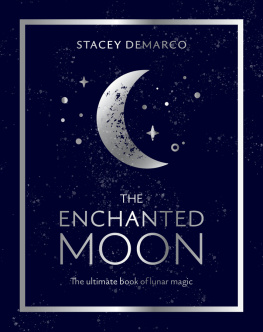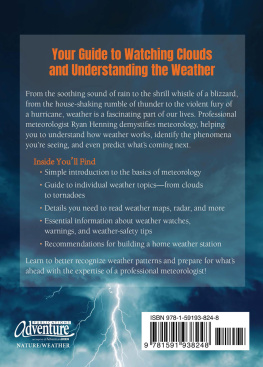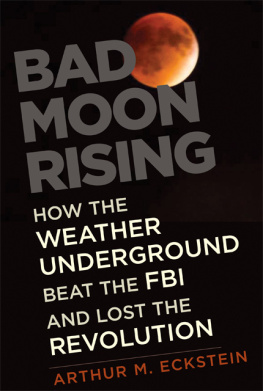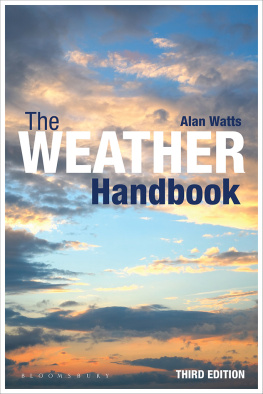A project such as this has been does not result from the efforts of one person. The initial vision of Steve Barnett to condense into a single book the story of the cycle of the seasons has resulted in the present work. I have drawn on 30 years of forecasting, collecting and concluding, but I have been blessed with enormous help.
I would like to sincerely thank my late wife Jude, Harry and Dulce Alcock, and John Daly of Australia, all now sadly gone from this planet, but their invaluable assistance and input remains and without them this work could not have materialised. My gratitude goes also to telephone and email colleagues in many countries, who over the past ten years have constituted a tiny peer group, namely Richard Holle of Kansas, Carolyn Egan of Rhode Island, Bernard Boyd and Carl Matthews of the UK, and Carl Smith of Australia, all of whom have made important contributions here and who continue to discuss and analyse (this being a work in progress that has and will continue to span several lifetimes). In New Zealand, Neville Gibb of Waiheke Island has always found time to assist with his wonderful tireless concern for accuracy and willingness to research. Finally, my immediate team of Glenys Dreyer and Vic Dreijer, working together with Steve Barnett and Sue Lewis at Random House, have enthusiastically pulled the whole project to completion. Thank you all so much.
The Moon governs the Moisture, and Spirit of the Earth.
Johan Goad, Astrometeorlogica, 1686
The bus
Before going to live on the bus I had remembered from school days that the Moon controlled the tides but that had never really been in doubt. I also had very vague inklings of it having something to do with fishing according to ancient customs of what were they? Solomon Islanders? And there was a school of thought about biorhythms from my university days that I hoped I had left well behind. But in the early 1970s I rediscovered the Moon, or perhaps it was vice versa.
Around 1974 we lived a subsistence-level camping life on the East Coast of the North Island of New Zealand myself, wife Jude and curly-headed son Keri, aged three. We were now three years into the camping travelling life, and becoming well used to it. In the course of time and after much exploring of inlets and deserted country byways and paths, we were eventually befriended by local Maori, and suspicion had turned to acceptance. Over the next six years we shared fish and fishing experiences, and I gradually absorbed most, if not all, of the traditional Maori fishing calendar. Jude absorbed the planting calendar, which many Maori today dont even know, being a vestige of old life and customs before colonial contact.
So, even though you vaguely remember learning about the Moon and its cycles at school, it means nothing until you are out there alone under a blindingly beautiful, overhead Full Moon in a pristine sky at midnight, where fish caught by the gills in a net flash and gleam as you harvest them.
The life was uncomplicated and basic, and it was the 1970s. For half a decade now, many of my generation had been leaving the city and trying new ways of being, without nine-to-five jobs and even, like us, without houses. By 1976, the birth of daughter Miri added to our small unit and made the bus start to feel a little cramped. Increasingly we wintered over at relatives baches or in the city, and after ten years in bus mode, it became less romantic, too much time spent away from doting grandparents and too hard managing in a small space. On a personal level, by the time I returned to city life I had indeed changed my outlook on many matters, including the hippie lifestyle. It had become disingenuous, stacked against characters we had met who really knew how to live in the country and with the elements swaggies, drovers, gypsies, farmers, fishermen and women and hunters all wily, fit, street-smart and in tune with the land.
I had achieved what I had set out to do living in a more natural way and with more appreciation of natural rhythms. And although I hadnt known where it would lead me, if anywhere, I had returned armed with something quite unexpected, the rudiments of a weather prediction system. This I had stumbled across almost accidentally. It had come from the need to fish at the right times, and having time on my hands with only fish to catch and the running gear on a bus to maintain. I more or less drifted into exploring it.
Many nights were spent staring at the country sky, for in the country the sky is not just starry, it is alive. In the bus ceiling, above the bed, I had installed a large, clear perspex dome, and when the moon was out we could watch it until we both fell asleep. Under its sparkle our daughter was conceived and we returned to its light every night it was out.
Early on, it became clear that the position of the Moon kept changing, even if the position of the bus did not. In my naivety I wondered to what extent this had been noticed by others. I had a complete vacuous ignorance that I was ashamed to admit to. That I had been through the university science mill and had not absorbed even the most basic knowledge of the workings of the nearest heavenly body to Earth was in need of fixing. I wanted to teach it to Keri, whose first word three years ago had been moo because he could not initially say Moon. On shopping trips I would visit libraries and look in the index of weather books under M. The Moon generally did not rate an entry.
Once in the many times sitting around staring at a fire, watching waves break and re-form, it had dawned on me that, to get to earthbound things like tides and fish and vegetable gardens, the Moon would have to pass through the air. It must therefore reasonably affect the air also, and yet the notion of Moon-affected air had not received mention from any one person or book I had yet encountered, nor even the Maori elders knowledgeable about tides and fish, and least of all, it seemed, the weather experts. So I resolved to try to get to the bottom of this, even if it turned out to be an enigma. If I were to find that I was happily wrong, I would want to find out why it didnt influence the air.
The wild and ruggedly beautiful East Coast between Papamoa and Hicks Bay proved an ideal research base. The local Tuhoe kaumatua had already told me what Maori knew about the Moon, and what Id learnt worked well. We spent most of those days fishing with either locals or family, often finding ourselves alone on deserted beaches, and planted small, secret vegetable gardens on hilltops away from the sight of the road.
In all these pursuits we found that getting timing correct was all-important. It seemed that time of day nearly always overrode location. For example, trial and error taught us that fishing around the mid-heaven transit of the Moon exactly between moonrise and moonset was the key to a successful catch. The sea often came alive at that time and it seemed to have less to do with tide times, which varied from one beach to the next. Planting and pruning was better done around moonrise or moonset. Perhaps it was our imagination but, somehow, the soil seemed fresher. Never a prolific diarist before, I now started keeping a journal and weather diaries, with graphs each day matching weather to Moon phases and eventually other information about the Moons movements which I was slowly gleaning from old astrology books.
It was clear rather quickly that there definitely were patterns. More questions arose are they constant, does the pattern itself change, was there an overriding one? The recording was rudimentary at first, and became more detailed. I was given or bought instruments, a twirling hygrometer (for humidity), a barometer, rain gauge, thermometer. Readings were taken religiously each morning, rain or shine, summer or winter.











